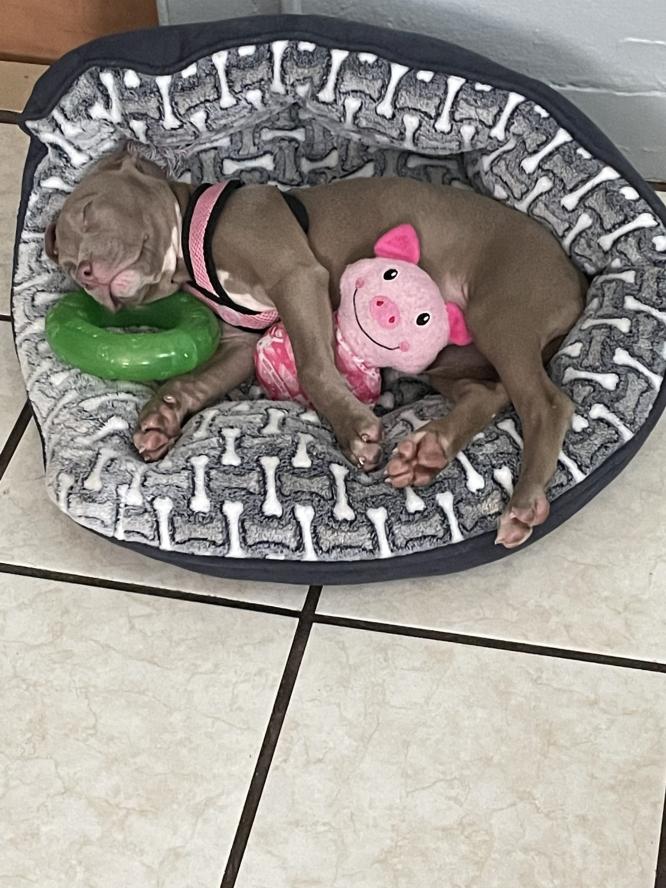-
About
- Leadership & Faculty
- News & Events
-
Academics
- Graduate
- Advanced Clinical Training
- Continuing Education
- Academic Departments
- Academic Offices
- Simulation Experiences
-
Student Life
- Offices
-
Research
-
Hospitals & Clinics
- Emergency Care
- Hospital Services
-
Community Outreach
- Volunteer
Saving Kesey: Young Pitbull with No Pulse Gets a Second Chance
Dr. Marisa Lourenco’s Quick and Decisive Actions Save Puppy

Kesey (KEE-cee), a five-month-old pitbull, was moribund, struggling to survive with an excessive heart rate, a low core body temperature, and no pulse, according to Marisa Lourenco, D.V.M., resident in Emergency Medicine and Critical Care (ECC) department at Cummings School’s Foster Hospital for Small Animals.
Earlier that night, in response to a phone inquiry, Dr. Lourenco had agreed to treat the puppy who was suffering from a gastroesophageal intussusception (resulting from invagination of the stomach into the esophagus). A rare condition, Kesey’s case of gastrothorax (when the stomach is completely inside of the chest) was more serious than anticipated. Dr. Lourenco quickly read a previous radiology report indicating that the puppy’s stomach could not be identified in the abdomen.
Prior to her residential appointment at Cummings School, Dr. Lourenco had more than four years of experience as a general practitioner in both her native Portugal and England, as well as internships in Scotland and the University of Georgia. In Dr. Lourenco’s three previous gastrothorax cases, each dog had lost its life.
Dr. Lourenco knew she had to stabilize Kesey, who soon became unresponsive. Kesey was quickly intubated and prepped for surgery. After her stomach was moved outside of the chest during surgery, Kesey slowly stabilized and a stomach tube, connected from the outside to the inside of her stomach, was inserted. This enabled an alternative method to feed Kesey and to alleviate pressure on her weak esophagus while it heals.
“We hope that she will be able to drink water through her mouth and once she is able to eat and drink orally we can remove the tube and she can live a normal life. That’s the goal,” Dr. Lourenco explains.
Her owners were thrilled with the care administered at Cummings School’s Foster Hospital. “She was in really bad condition but Cummings School staff took really good care of her,” said Kesey’s owner Karen Guzman. “We are so happy and grateful for the doctors.”
And Kesey appreciates them as well. “When we visited again, Kesey almost threw herself on the doctors, because she was so excited to see them,” Guzman laughs.
“This was a really good save,” shares Clinical Assistant Professor of Emergency Medicine and Critical Care Ian DeStefano, D.V.M., DACVECC. “When I arrived at the hospital and Marisa brought me up to speed on the case, I quickly realized that I agreed with every decision she had made from the moment the dog came in the door.
“She is super passionate, highly skilled and were it not for her swift and decisive approach to administer the proper medications, to intubate the dog to avoid arrest, and quickly get him into the OR, there’s a good chance he may not have survived.”
“Kesey is a little miracle to me,” Dr. Lourenco beams. “To have her survive surgery and anesthesia and to be alive … it’s very rewarding. This is the reason why I wanted to have this job.”
Department:
Foster Hospital for Small Animals